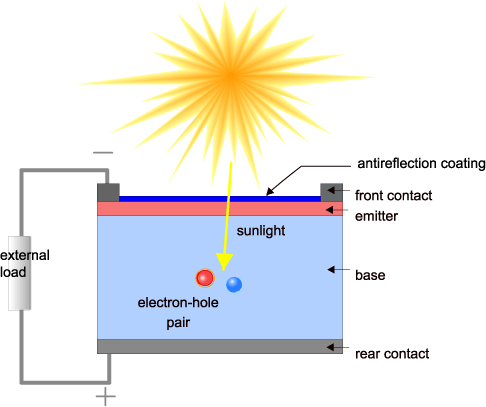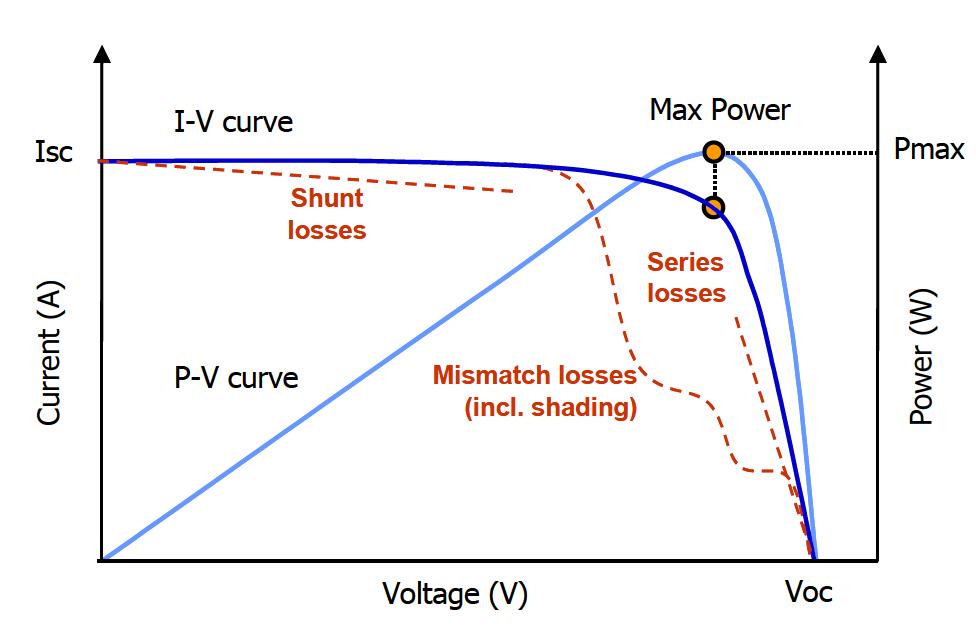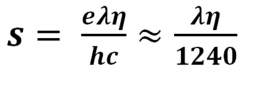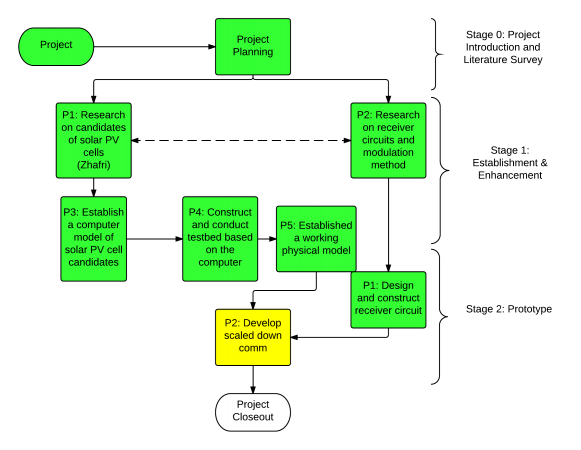Projects:2014S1-49 Can Solar PV cells be used as Telecommunications Receivers?
Project 49, named Can Solar PV cells be used as telecommunication receiver focuses on providing an engineering validation of the suitability of using PV solar cells for Free Space Optics (FSO) telecommunication receivers. Supervised by Professor Langford White, project 49 involves two undergraduate students, Ahmad Muhamed Yusof and Muhammad Zhafri. As mentioned, this project is limited to FSO implementation and thus, is centred to solar PV cell response to wireless communication. With regards to validating the suitability of PV cells as receivers, characteristics of interest investigated are Signal-to-noise ratio (SNR), responsivity, rise time, and bandwidth. The main significance of this project is to broaden the usage of solar cell. The project is managed through a systematic timeline consisting of stages with complementing objectives. Based on the timeline, risk and budget are reviewed and analysed periodically as necessary, results are produced as stated, deliverables are submitted and meetings are conducted as scheduled.
Contents
Project Information
Background and Motivation
Recently, wireless approach has become a more popular option for communication method considering it to be cheaper in term of maintenance and also laying out the physical link itself. It also known to be less taxing as it gives less chance for problem with regards to hardware. Thus, incorporating an additional option to this technology would be a beneficial novelty to current growing technology which give rise to this project which is to incorporate solar PV cell as a the receiving element.
Specifically, the wireless technology of interest is Free Space Optics (FSO) which utilises infrared as its transmission carrier (780 nm – 1440nm). As solar PV cells known to response to infrared light, it gives a possibility to use it as a receiver [1]. Furthermore, with the expanding usage of solar PV cell as an additional energy supply, extending its usage to a receiver would primarily promote renewable energy, and also give beneficial properties to users.
Significances
- Broaden the usage of solar cell
- Provides cheaper FSO system
Aim
This project is aimed to obtain an engineering validation of solar PV cell as a telecommunication receiver. Governing this aim are the following objectives:
- To investigate and analyse the characteristics of solar PV cell in a monochromatic light condition
- Simulate and establish communication model by using solar cell as its receiver
Theory and Terminology
Solar Photovoltaic Theory
Solar photovoltaic (PV) cell refers to a device that is capable of converting light to electricity. Light that is shine on the solar cell will produce both voltage and current to produce electric power. In most solar cells, this energy conversion uses semiconductor material in the form of a p-n junction. [1] [2] [3]
IV curve is a graph of voltage versus current produce by the solar cell that often describes the characteristics of a solar PV cell. There are two types of IV curves which are; IV Curves with load and without load.
From this graph the following parameter of interest can be obtained:
- Maximum power produce, Pmax
Maximum power can be observed based on the IV curve data. At maximum power point (mpp), the point of current and voltage are called Impp and Vmpp.
- Shunt resistant or Parallel Resistance, Rsh
Shunt resistance refers to resistance arises from the parasitic current produce in between the solar cells and the frame that goes from top to bottom that resulted from impurities in the materials. [4] Can be approximated from the slope near short-circuit current with load condition. [9]
- Series resistant, Rs
Series resistant refers to losses from the material, bonding occurred during manufacturing process, and semiconductor contact losses. [4] This parameter can be approximated from the slope near open-circuit voltage in IV curve with load condition. [9]
- Short circuit current, Isc
It is the current produce when load connections of the solar cells are short circuited.
- Open circuit voltage, Voc
It is the voltage produce when the load connections of the solar cell are open circuited.
Similar to photodetectors [4], the responsivity of solar cell is the solar cell output or solar current divided by the radiant power with units of A/W [10]. Based on this project, the radiation of interest is a monochromatic infrared region; the responsivity of interest is spectral responsivity which means the responsivity is dependent on wavelength [10]. The equation relating responsivity and wavelength is as shown below. [10]
Where
electron charge,e = 1.602×10−19 C
Wavelength,λ
quantum effeciency,η
Plank's constant,h = 6.626×10−34 Js
Speed of light,c = 2.998 ×108 m/s
Communication Theory
Communication, by definition, is the process of parting or exchanging information through a variety of medium. It is one of the human needs apart from eating, drinking and shelter. Communication technology started since the early existence of human, where symbols are generated to exchange information from one person to another. As human revolutionised, communication started to grow faster and bigger. Early inventions of telephone and computer network opened up the potential of having global communication, thus communication technology become more and more important. Generally, modern communication transmission consists of information signal, modulation scheme, channel association, and receiving element as shown below. Input signal is the signal that is intended to be sent as it contains information. Information can be in any form of data, such as voice or text that will affect the complexity of the signal.
In order to control the information signal, modulation scheme is implied. Modulation is a process of varying one or more properties of a periodic waveform, called the carrier signal in order to properly store the intended information during transmission. There are 2 types of modulations, which is digital modulation and analogue modulation Digital modulation is aimed to transfer a digital bit stream over an analogue bandpass channel, while analogue modulation is applied continuously in response to the analogue information signal . There are a lot of existing modulation scheme that is available in both modulation methods, that individually has their own pros and cons. Digital and analogue modulation methods, however, shares the same type of modulation scheme, with difference on its physical implementation. For example, there is amplitude modulation (AM) in analogue signal, and in digital it is known as Quadrature Amplitude Modulation (QAM) which both utilises the amplitude of the carrier signal to properly store the data.
A communication channel or widely known just by channel, refers either to a transmission medium or to a logical connection over a multiplexed medium such as a radio channel. It has its own certain capacity for transmitting information, often measured by its bandwidth in Hz or its data rate in bits per second. Like modulation, channelization also consists of analogue model and digital model. Analogue channel model utilises analogue signal as its own transmitted signal. The model reflects the channel performance measured such as signal to noise ratio and its spectral bandwidth. Digital channel model, however, consists of digital signal as its transmitted message at a certain protocol layer. The model might reflect channel performance measures such as bit rate, bit errors and latency.
After the signal being transmitted, receiving module is essentially needed to capture the transmitted signal and extracting the information. Received signal contains the transmitted signal with some additional noise coming from various sources. Receiving module generally consists of receiving element to detect the transmitted signal (such as antenna or photodiodes), demodulator and the output signal. Depending on the performance of the receiving element, an enhancement circuit might be needed in order to properly extract the signal before it is being demodulated.
Method of Approach
The purpose of Stage 1 is to address the first objectives of this project. This will be achieved progressively through five phases. The overview flow of Stage 1 is firstly to obtained candidates of solar PV cells by conducting research on market availability. Once a list of candidates is obtained, a computer model is established to model solar PV cells IV curve. From this model, the parameters of solar PV cells are studied as mentioned in section 2.1 to firstly validate the model and also to have a better understanding of solar PV cells characteristics. With the model established, solar PV cells characteristics are studied by conducting series of experiment. Concurrently with this, research on a suitable receiver circuits and modulation method for solar PV cells is conducted.
As for Stage 2, it is established to address the second objective of this project which is to simulate and establish communication model by using solar cell as its receiver. In achieving these objectives, the results from Stage 1 are utilised with additional design. This additional design refers to the first phase which is Design and Construct Receiver Circuit. Continue on that is Phase 2 of Develop a Scaled down Communication Prototype referring to the integration of information and design from previous results.
Result Summary
Experimental Result
Monocrytalline solar PV cell produces better IV curve in comparison to Polycrystalline solar PV cell
Green Laser gives highest current and voltage output
Prototype Specification
| Parameters | Specification |
|---|---|
| Receiving Element | Monocrystalline solar PV cell |
| Transmitter | Green Laser |
| Serial Communicator | Arduino Uno |
| Signal Processor | MATLAB |
| Channel Bandwidth | ~2kHz |
| Rise Time | ~111.11us |
Module Design
Project Deliverables
- Project Proposal (20-21/3/2014)
Present the project intended approach for the project including other items to convince supervisors of students understanding. These items include Background/Motivation, Significance, Aim & Objectives, Approach, Timeline, Milestones, Risk Management and Proposed Budget. Project Proposal was presented in PowerPoint.
- Project Progress Report (6/6/2014)
Record the outcomes from the first semester (3/3/2014-9/6/2014). Specifically, it present progress made in Stage 1 and any changes come with it. Report was recorded in word document.
- Project Final Seminar (16/10/2014)
This presentation is to address the following regarding this project:
- What is the project about?(introduction, motivation, and objectives)
- How the project is managed?(timeline, risk analysis, task allocation, budget)
- What is the outcome of this project? (results and analysis, challenges)
- What can be improved? (Future recommendations)
- Project Final Report (24/10/2014)
Project Final Report provides a detailed summary of the aims, methods and results of the project. It was presented individually by student in word document.
- Exhibition Poster (27/10/2014)
It is a poster to be presented during project exhibition on 30/10/2014.
- Project Exhibition (30/10/2014)
Project Exhibition is a public event to present the project to assessors as well as visitors from industry and the general public. The project is to be presented with the aid of poster and demonstration.
Team
Group Members
- Muhammad Zhafri Md Zin
- Ahmad Damanhuri Mohamed Yusof
Supervisors
References
[1] A.Labouret and M. Vilvoz, Solar Photovoltaic Energy, Fourth Edition ed., Berne Convention, 2010.
[2] S. Nema, R. Nema and G. Agnihotri, “Matlab / simulink based study of photovoltaic cells / modules / array and their experimental verification,” INTERNATIONAL JOURNAL OF ENERGY AND ENVIRONMENT, vol. 1, no. 3, pp. 487-500, 2010.
[3] H.-L. Tsai, C.-S. Tu and Y.-J. Su, “Development of Generalized Photovoltaic Model Using MATLAB/SIMULINK,” in Proceedings of the World Congress on Engineering and Computer Science, San Fransisco, 2008.
[4] C. H. S. Bowden, “PVEducation,” [Online]. Available: http://www.pveducation.org/. [Accessed 13 May 2014].
[5] “Guide to Interpreting I-V Curve Measurements of PV Arrays,” 1 March 2001. [Online]. Available: http://resources.solmetric.com/get/Guide%20to%20Interpreting%20I-V%20Curves.pdf. [Accessed 21 October 2014].
[6] W. L. Soong and N. Ertugrul, Distribution Generation Technology Notes, 2011.
[7] T. Saito, Spectral Properties of Semiconductor Photodiodes, Advances in Photodiodes, INTECH, 2011.
[8] Y. Arimoto, “Developing a New Free-Space Optical Communication Terminal that Realizes High Speed Broadband Communication,” NICT News,., vol. 392, pp. 1-5, May 2010.
[9] Rodney S. Tucker, “Broadband Facts, Fiction and Urban Myths,” Telecommunication Journal of Australia, vol. 60, no. 3, pp. 43.1-43.15, 2010.
[10] P. V. V. Jayaweera, A. G. U. Perera, M. K. I. Senevirathna, P. K. D. D. P. Pitigala and K. Tennakone, “Dye-sensitized near-infrared room-temperature photovoltaic photon detectors,” Appied Physics Letters, 2004.





